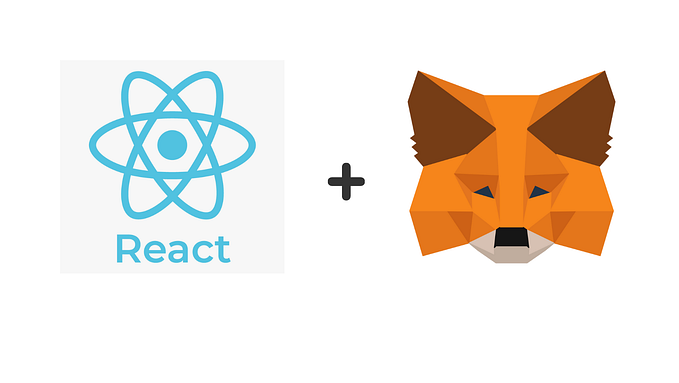How I Compile, Test & Deploy my smart contracts using Truffle
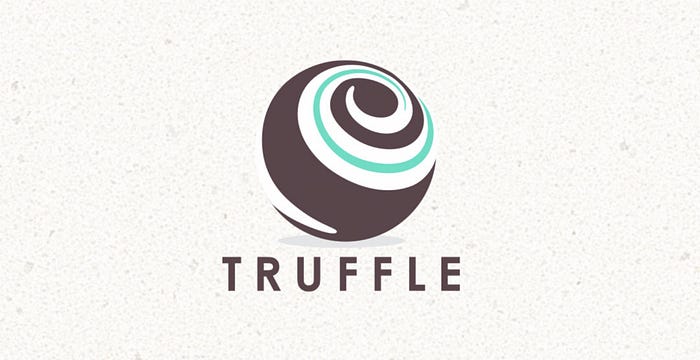
Truffle is a development environment, testing framework and asset pipeline for blockchains using the Ethereum Virtual Machine (EVM).
In this article, we will see how to start using Truffle to write, compile, test and deploy smart contracts that run on the blockchain.
Installing truffle
To get started, we need to install Truffle on our computer using npm. Open a terminal and use the following command to install it globally.
npm install -g truffleCreate a folder for your new truffle project and initialize it using the command listed below
truffle init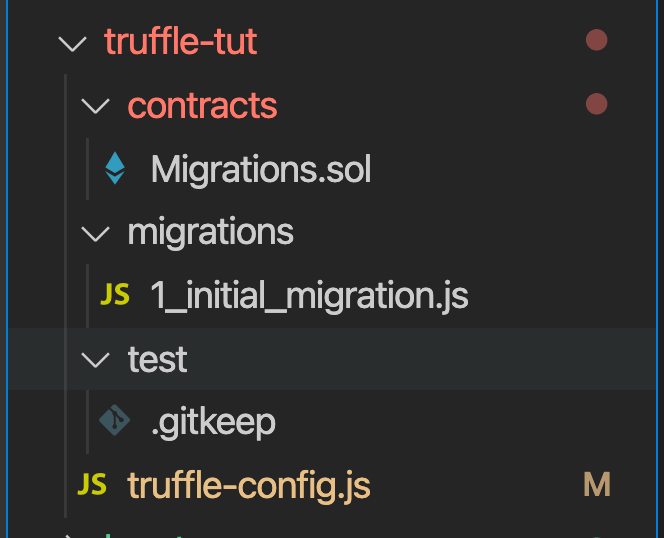
Once this operation is completed, you’ll now have a project structure with the following items:
contracts/: Folder for Solidity contractsmigrations/: Folder for scriptable deployment filestest/: Folder for test files for testing your application and contractstruffle.js: Truffle configuration file
For the moment, all we are going to do is uncomment the part of the configuration file (truffle-config.js) where we define the network to be used.
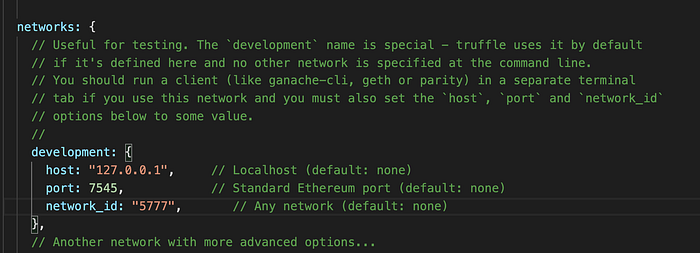
Write a smart contract
You can write a smart contract in a file with a .sol extension and save it under the contracts folder or you can paste an existing smart contract from Remix IDE.
I have another article on writing smart contracts in Solidity linked here.
Compile
Next, we will compile our code using the following command and you will notice a build folder in our project directory post compilation
truffle compile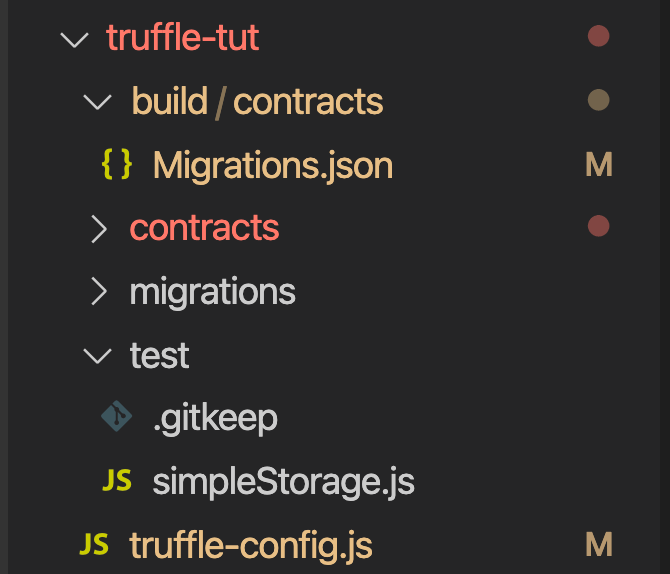
Truffle’s contract artifacts are the large JSON files that get saved in your build/contracts/ directory. Truffle saves our artifacts when we compile and updates our artifacts with address information when we migrate.
Test
Truffle lets you write tests in Javascript and Solidity. It uses the Mocha testing framework for testing the Smart Contract. All test files should be located in the ./test directory. Truffle will only run test files with the following file extensions: .js, .ts, .es, .es6, .jsx,.sol. All other files are ignored.
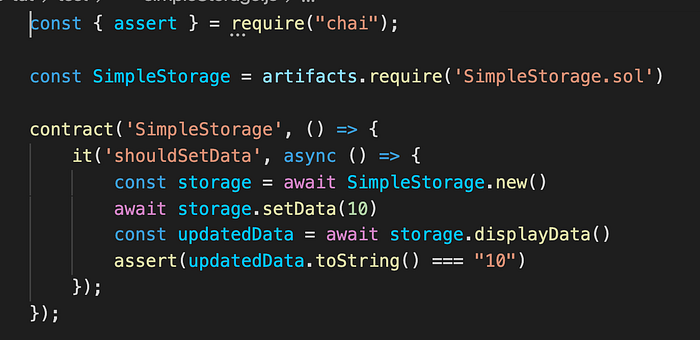
We need to ask for contracts to interact with, within your test explicitly. We can do this by using the artifacts.require() method, a method provided by Truffle that allows us to request a usable contract abstraction for a specific Solidity contract.
To explain this test code in short
- ‘contract()’ is the same as ‘describe()’ in mocha.
2. ‘it()’ is used to create a test.
3. Deploys the contract.
4. Get the value of the variable ‘updatedData’.
5. Use assert.equal() to test if the expected output is the same as the actual output.
To run all tests, simply run:
truffle testortruffle test ./path/to/test/file.js
Deploy

Deployer function
All migrations must export a function via the module.exports syntax. The function exported by each migration should accept a deployer object as its first parameter. The deployer object is your main interface for staging deployment tasks.
To deploy our smart contracts, we’re going to need to connect to a blockchain. Truffle has a built-in personal blockchain that can be used for testing. This blockchain is local to your system and does not interact with the main Ethereum network.
You can create this blockchain and interact with it using Truffle Develop.
- Run Truffle Develop:
truffle develop
migrate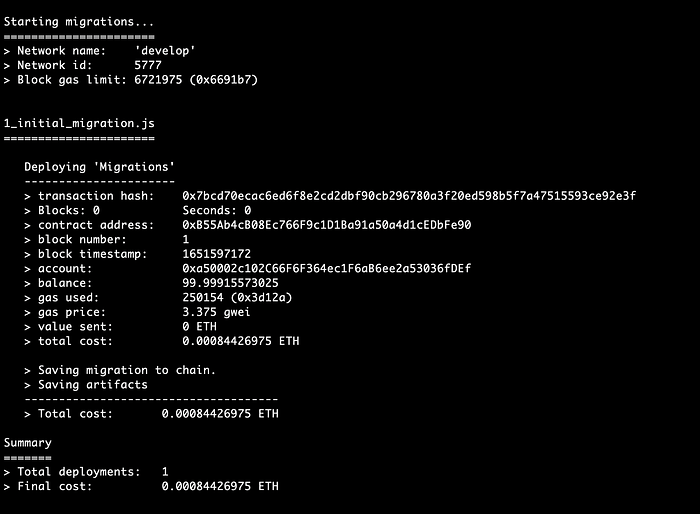
You can use these Ids and addresses to create and connect to UI or develop a Dapp.
Done!!! That’s how to compile, test and deploy a Smart Contract.
You can find the complete code here.
Thanks for reading this article ❤
Clap 👏 If this article helps you.



